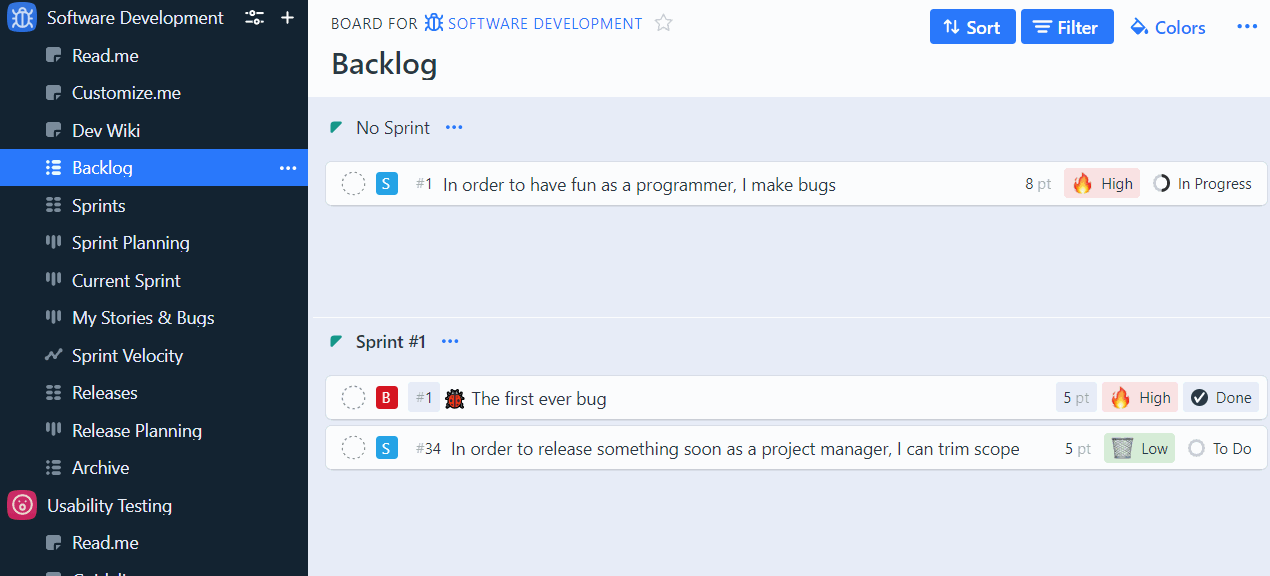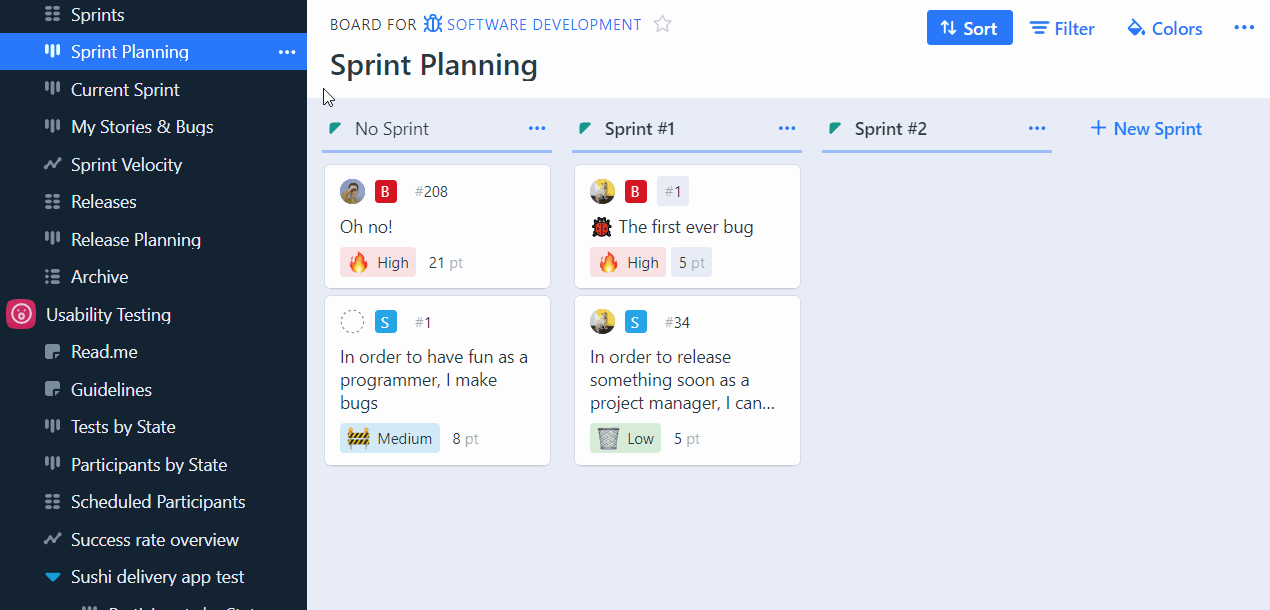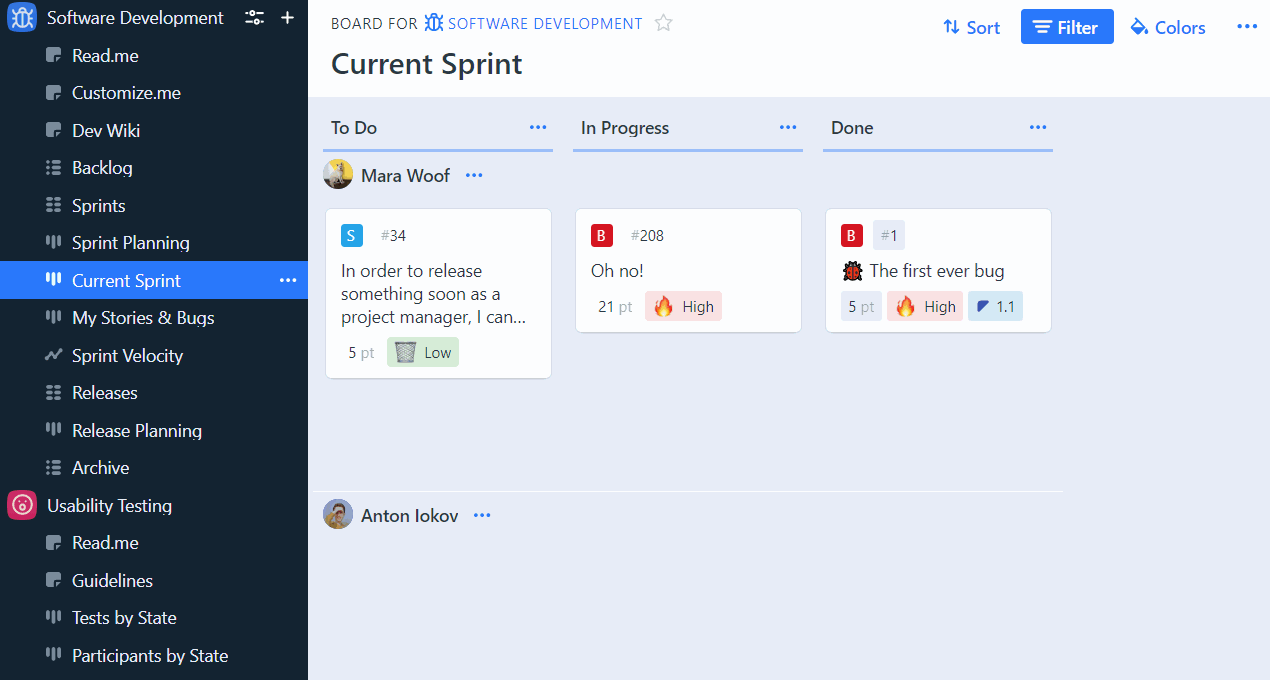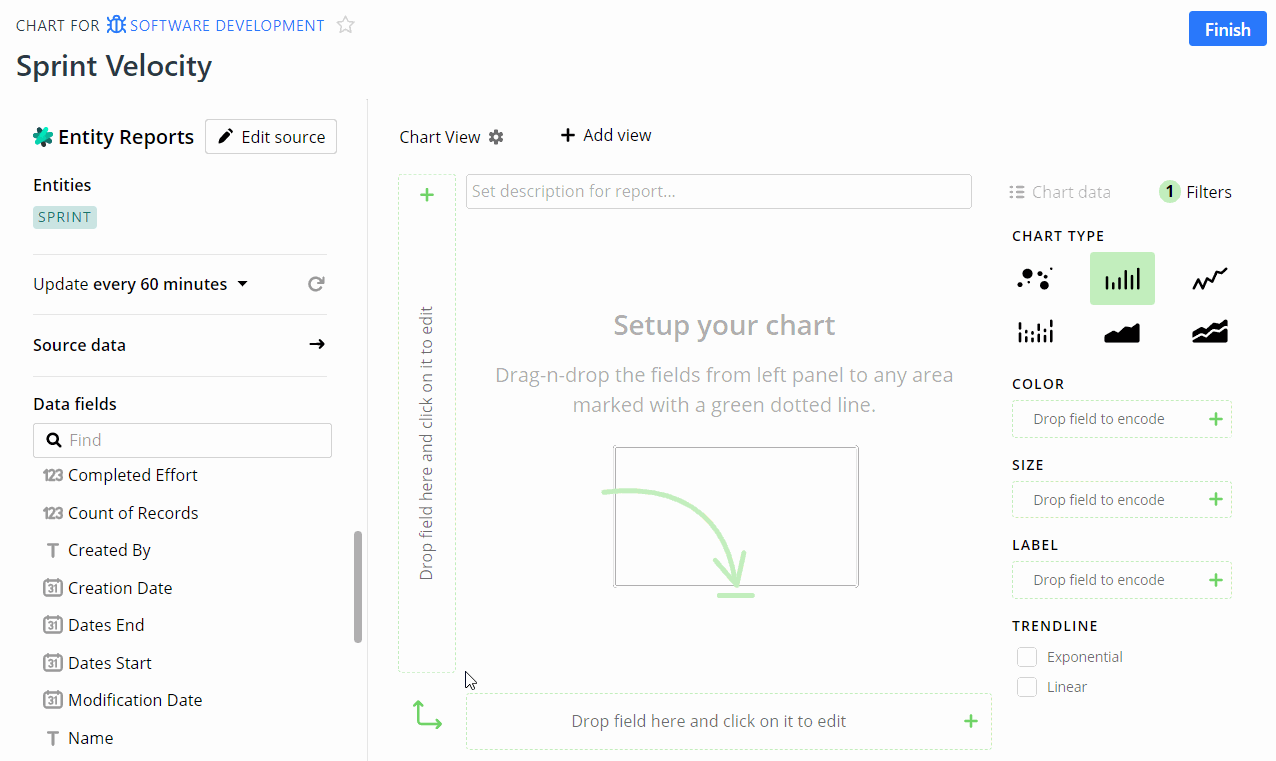Software Development Scrum Template
Check out other Software Development templates:
Allocation Management
A realistic way to plan, allocate, and monitor your team’s time across projects without overbooking or burning them out.

Bitbucket
Connect Bitbucket projects, repositories, branches etc. to your Fibery processes.
Daily Check-In Template
Boost productivity with Fibery's daily check-in template. Keep everyone aligned on priorities, progress, and blockers for collaboration.

Github
Bring your code closer to work to get visibility and avoid context switching.

GitLab
Connect merge requests to tasks to streamline your dev workflow.

Jira
Sync your whole Jira Server or Cloud database to Fibery and connect issue tracking to roadmapping before fully switching from J to F
Kanban board
It's a template for a pull system where Stories and Bugs move through various stages based on capacity.
Retrospectives
Improve your sprints with Fibery's Agile Sprint Retrospective Template. Reflect, learn, and adapt for continuous team improvement.
Scrum for teams Template
Effectively manage Scrum sprints with Fibery's template. Plan, execute, and track sprint progress to deliver successful agile projects.
Test Case Template
Ensure thorough software testing with Fibery's Test Case Template. Create, organize, and track test cases for improved quality assurance.
Ticket tracker
Ticket Tracker is used to efficiently log and manage reported issues in a structured system.




